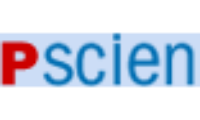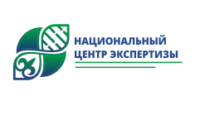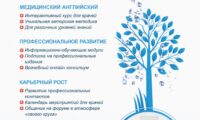Алынды: 29.06.2023/ Қабылданды: 06.12.2023/ Онлайн жарияланды: 29.12.2023
УДК 615.32
DOI 10.53511/PHARMKAZ.2024.98.54.033
Р. А. КОЗЫКЕЕВА 1, К.К. ОРЫНБАСАРОВА 1, Ш.К. МАУЖАН 1, Р. А. КОЗЫКЕЕВА 2
1«Оңтүстік Қазақстан медицина академиясы» АҚ, Шымкент қ., ҚР
2 «Оңтүстік Қазақстан мемелекеттік педагогикалық университететі», Шымкент қ., ҚР
ШҰБАР АЛАТІКЕН (SILYBUM MARIANUM L. GAERTN.) – ДӘРІЛІК
ӨСІМДІГІНІҢ КУЛЬТИВАЦИЯСЫН ҰЙЫМДАСТЫРУ ЖОЛДАРЫ
Түйін. Шұбар алатікен (Silybum marianum L. Gaertn.) бауыр ауруларын емдеуге арналған дәрілік өсімдік. Оның емдік қасиеттері силимариннің, үш флавонолигнанның (силибин, силидианин және силикристин) қоспасының болуына байланысты. Тұқымдарында силимариннің ең көп мөлшері бар, бірақ
бүкіл өсімдік бөліктері медицинада қолданылады. Шұбар алатікен кез келген топырақ түрлерінде
өсе алады, құмды топырақтан сазға дейін. Шұбар алатікеннің тұқымдары тікелей топыраққа себіледі. Егіс күзде және көктемде жүзеге асырылады, ал арықтар арасындағы қашықтық әдетте
40-75 см, қатардағы өсімдіктер арасындағы қашықтық 20-30 см құрайды. Бұл дақылдың төмен және орташа қоректік заттарға қажеттілігі, өйткені ол сапасыз топырақтарға және әртүрлі өсу
жағдайларына бейімделген. Шұбар алатікеннің өндірудің шектеуші факторы арамшөптердің араласуы болып табылады. Гербицидтер пендиметалин және метрибузин шұбар алатікендегі арамшөптермен бөлек немесе біріктірілген түрімен күресу үшін қауіпсіз болып табылады. Шұбар алатікен құрғақшылыққа төзімді болып саналады және жиі жауын-шашынның қалыпты мөлшері жеткілікті. Жерорта теңізі жағдайында, қатты құрғақшылық жағдайында дақылдарды тұқымның өсуі
мен құю кезінде суару керек. Сонымен қатар, шұбар алатікеннің бірнеше сорттары өсірілген. Силимарин мөлшері көбінесе дәндердің құрғақ заттары 1,0% – дан 3,0% – на дейін өзгереді, бірақ 8%
– дан асуы мүмкін. Құрамында силимарин мөлшері жоғары сортты өсімдік өсіруге күш салу керек.
Зерттеу мақсаты тиісті культивациялау ережелерін сақтай отырып, алдыңғы қатарлы культвациялаудың озық тәсілдерін қолдана отырып құрамында силимарині көп өнім алу болып табылады.
Қойылған мақсатты жүзеге асыру үшін алдымызға қойылған тапсырмалардың бірі шұбар алатікенді культивациялау жолдарына әдеби шолу жасау және зерттеуімізге тиімді тәсілдерді таңдау болып табылады. Зерттеудің өзектілігі шұбар алатікенді мәдени түрде өсіру арқылы құрамында силимарині көп өнім алу жолын табу.
Түйінді сөздер: Силимарин, флавонолигнан, шұбар алатікен, дәрілік өсімдік, астра гүлділер, егін,
ұрықтану, өсу, арамшөп.
ӘДЕБИЕТТЕР ТІЗІМІ
1 Raskin, I., Ribnicky, D.M., Komarnytsky, S., Ilic, N., Poulev, A., Borisjuk, N., Brinker, A., Moreno, D.A., Ripoll, C., Yakoby, N., O’Neal, J.M.O., Cornwell, T.,
Pastor, I., Fridlender, B., 2002. Plants and human health in the twenty-first century. Trends Plant Sci. 20, 522–531.
2 Ma, J.K-C., Chikwamba, R., Sparrow, P., Fischer, R., Mahoney, R., Twyman, R.M., 2005. Plant-derived pharmaceuticals – the road forward. Trends Plant
Sci. 10, 580– 585.
3 Canter, P.H., Thomas, H., Ernst, E., 2005. Bringing medicinal plants into cultivation: opportunities and challenges for biotechnology. Trends Biotechnol. 23,
180–185.
4 Bilalis, D., Papastylianou, P., Konstantas, A., Patsiali, S., Karkanis, A., 2010. Weedsuppressive effects of maize-legume intercropping in organic farming. Int.
J. Pest Manage. 56, 173–181.
5 Hall, J.C., Van Eerd, L.L., Miller, S.D., Owen, M.D.K., Prather, T.S., Shaner, D.L., Singh, M., Vaughn, K.C., Weller, S.C., 2000. Future research directions
for weed science. Weed Technol. 14, 647–658.
6 Montemurro, P., Fracchiolla, M., Lonigro,A., 2007. Effects of some environmentalfactors on seed germination and spreading potential of Silybum marianum
Gaertner. Ital. J. Agron. 3, 315–320.
7 Gresta, F., Avola, G., Guarnaccia, P., 2007. Agronomic characterization of some spontaneous genotypes of milk thistle (Silybum marianum L Gaertn.)in
Mediterranean environment. J. Herbs Spices Med. Plants 12, 51–60.
8 Hetz, E., Liersch, R., Schieder, O., 1995. Genetic investigations on Silybum marianum and S. eburneum with respect to leaf colour, outcrossing ratio, and
flavonolignan composition. Planta Med. 61, 54–57.
9 Vaknin, Y., Hadas, R., Schafferman, D., Murkhovsky, L., Bashan, N., 2008. The potential of milk thistle (Silybum marianum L.), an Israeli native, as a source
of edible sprouts rich in antioxidants. Int. J. Food Sci. Nutr. 59, 339–346.
10 Andrzejewska, J., Sadowska, K., Mielcarek, S., 2011. Effect of sowing date and rate on the yield and flavonolignan content of the fruits of milk thistle (Silybum
marianum L. Gaertn.) on light soil in a moderate climate. Ind. Crops Prod. 33, 462–468.
11 Dodd, J., 1989. Phenology and seed production of variegated thistle, Silybum marianum (L.) Gaertn., in Australia in relation to mechanical and biological
control. Weed Res. 29, 255–263. Efthimiadou, A., Karkanis, A., Bilalis, D.,
12 Sindel, B.M., 1991. A review of the ecology and control of thistles in Australia. Weed Res. 31, 189–201.
13 Khan, M.Z., Blackshaw, R.E., Marwat, K.B., 2009. Biology of milk thistle (Silybum marianum) and the management options for growers in north-western
Pakistan. Weed Biol. Manage. 9, 99–105
11 Kren, V., Walterova, D., 2005. Silibin and silymarin – New effects and applications. Biomed. Pap. 149, 29–41.
15 Zheljazkov, V.D., Zhalnov, I., Nedkov, N.K., 2006. Herbicides for weed control in blessed thistle (Silybum marianum). Weed Technol. 20, 1030–1034.
16 Engelberth, A.S., Carrier, D.J., Clausen, E.C., 2008. Separation of silymarins from milk thistle (Silybum marianum L.) extracted with pressurized hot water
using fast centrifugal partition chromatography. J. Liq. Chromatogr. Relat. Technol. 31, 3001–3011.
17 Wallace, S.N., Carrier, D.J., Clausen, E.C., 2005. Batch solvent extraction of flavonoligans from milk thistle (Silybum marianum L Gaertner). Phytochem.
Anal. 16, 7–16.
18 Freedman, N.D., Curto, T.M., Morishima, C., Seeff, L.B., Goodman, Z.D., Wright, E.C., Sinha, R., Everhart, J.E., HALT-C Trial Group, 2011. Silymarin use
and liver disease progression in the Hepaititis C antiviral long-term treatment against cirrhosis trial. Aliment. Pharmacol. Ther. 33, 127–137.
19 Wagner, H., Horhammer, L., Munster, R., 1968. On the chemistry of silymarin (silybin),the activeprinciple ofthe fruits fromSilybum marianum (L.)
Gaertn(Carduus marianus L.). Arzneimittel-Forschung/Drug Res. 18, 688–696.
20 Ramasamy, K., Agarwal, R., 2008. Multitargeted therapy of cancer by silymarin. Cancer Lett. 269, 352–362.
21 Kvasnicka, F., Bida, B., Sevcik, R.,Voldrich, M.,Kratka, J.M., 2003.Analysis ofthe active components of silymarin. J. Chromatogr. A 990, 239–245.
22 Fraschini, F., Demartini, G., Esposti, D., 2002. Pharmacology of silymarin. Clin. Drug Investig. 22, 51–65.
23 Shaker, E., Mahmoud, H., Mnaa, S., 2010. Silymarin, the antioxidant component and Silybum marianum extracts prevent liver damage. Food Chem.
Toxicol. 48, 803–806.
24 Ghosh, A., Ghosh, T., Jain, S., 2010. Silymarin – a review on the pharmacodynamics and bioavailability enhancement approaches. J. Pharm. Sci. Technol.
2, 348–355.
25 Abenavoli, L., Capasso, R., Milic, N., Capasso, F., 2010. Milk thistle in liver diseases: past, present, future. Phytother. Res. 24, 1423–1432.
26 Iosio, T., Voinovic, D., Perissutti, B., Serdoz, F., Hasa, D., Granar, I., Dall’ Acqua, S., Zara, G.P., Muntoni, E., Pinto, J.F., 2010. Oral bioavailability of silymarin
phytocomplex formulated as self-emulsifying pellets, Phytomedicine, doi:10.1016/j.phymed.2010.10.012.
27 Haban, M., Otepka, P., Kosiba, L., Habanova, M., 2009. Production and quality of milk thistle (Silybum marianum (L.) Gaertn.) cultivated in cultural conditions
of warm agri-climatic macroregion. Horticult. Sci. 36, 25–30.
28 Hadi, H.S., Darzi, M., Ashoorabadi, S.E., 2008. Study of the effects of conventional and low input production systems on quantitative and qualitative yield
of Silybum marianum L. cultivating the future based on science, 1. In: 2nd Conference of the International Society of Organic Agriculture Research ISOFAR ,
Modena, Italy, pp. 738–741.
29 Ghavani, N., Ramin, A.A., 2008. Grain yield and active substances of milk thistle as affected by soil salinity. Commun. Soil Sci. Plant Anal. 39, 2608–2618.
30 Young, J.A., Evans, R.A., Hawkes, R.B., 1978. Milk thistle (Silybum marianum) seed germination. Weed Sci. 26, 395–398.
31 Ghavani, N., Ramin, A.A., 2007. Salinity and temperature effects on seed germination of milk thistle. Commun. Soil Sci. Plant Anal. 38, 2681–2691.
32 Omer, E.A., Refaat, A.M., Ahmed, S.S., Kamel, A., Hammouda, F.M., 1993. Effect of spacing and fertilization on the yield and active constituents of milk
thistle, Silybum marianum. J. Herbs. Spices Med. Plants 1, 17–23.
33 Shokrpour, M., Mohammadi, S.A., Moghaddam, M., Ziai, S.A., Javanshir, A., 2008. Variation in flavonolignan of milk thistle (Silybum marianum) fruits grown
in Iran. J. Herbs Spices Med. Plants 13, 55–69.
34 Flora, K.M.D., Hahn, M.M.D., Rosen, H.M.D., Benner, K.M.D., 1998. Milk thistle (Silybum marianum) for the therapy of liver disease. Am. J. Gastroenterol.
93, 139–143.
35 Martin, R.J., Lauren, D.R., Smith, W.A., Jensen, D.J., Deo, B., Douglas, J.A., 2006. Factors influencing silymarin content and composition in variegated
thistle (Silybum marianum). N.Z. J. Crop Horticult. Sci. 34, 239–245.
36 Andrzejewska, J., Sadowska, K., 2008. Effect of cultivation conditions on the variability and interrelation of yield and raw material quality in milk thistle
(Silybum marianum (L.) Gaertn.). Acta Sci. Pol. Agric. 7, 3–11.
37 Carrier, D.J., Crowe, T., Sokhansanj, S., Wahab, J., Barl, B., 2003. Milk thistle, Silybum marianum (L.) Gaertn., flower head development and associated
marker compound profile. J. Herbs Spices Med. Plants 10, 65–74.
38 Gabucci, L., Curioni, A., García, M., Urrutia, M.E., 2002. Producción de semillas en el cultivo de cardo mariano. Acta Horticult. (ISHS) 569, 121–128.
39 Berner, D.K., Paxson, L.K., Bruckart, W.L., Luster, D.G., McMahon, M., Michael, J.L., 2002. First report of Silybum marianum as a host of Puccinia
punctiformis. Plant Dis. 86, 1271.
40 Souissi, T., Berner, D.K., Smallwood, E.L., 2005. First report of smut caused by Microbotryum silybum on inovy thistle. Plant Dis. 89, 1242.
41 Sacristan, S., Fraile, A., Garcia-Arenal, F., 2004. Population dynamics of cucumber mosaic virus in melon crops and in weeds in central Spain. Phytopathology
94, 992–998.
42 Chatzivasiliou, E.K., Boubourakas, I., Drossos, E., Eleftherohorinos, I., Jenser, G., Peter, D., Katis, N.I., 2001. Weeds in greenhouses and tobacco fields
are differentially infected by tomato spotted wilt virus and infested by its vector species. Plant Dis. 85, 40–46.
43 Kavallieratos, N.G., Tomanovic, ´ Z., Sarlis, G.P., Vayias, B.J., Zìkic, ´ V., Emmanouel, N.E., 2007. Aphids (Hemiptera: Aphidoidea) on cultivated and selfsown plants in Greece. Biology 62, 335–344.
44 Rezwani, A., 2008. A new species, and a new record of a subspecies belonging to the genus Dysaphis (Homoptera: Aphididae) from Iran. J. Entomol. Soc. Iran 27, 23–26.
45 Ram, G., Bhan, M.K., Gupta, K.K., Thaker, B., Jamwal, U., Pal, S., 2005. Variability pattern and correlation studies in Silybum marianum Gaertn. Fitoter.
76, 143– 147.
46 Abdel-Moniem, A.S.H., 2002. The seed-head weevil, Larinus latus Herbst(Coleoptera: Curculionidae) as a new record in Egypt on the milk thistle, Silybum
marianum (L.) (Asteraceae: Compositae). Arch. Phytopathol. Plant Prot. 35, 157–160.
47 Adzet, T., Iglesias, J., Martinez, F., 1993. Flavonolignans in the fruits of Silybum genus taxa: a chromatographic and mass spectrometric survey. Plantes
Med. Phytother. 26, 117–129.
48 Curioni, A., Carcía, M., Alfonso, W., Arizio, O., 2002. Predicción de la cosecha de cardo mariano a través de las características externas que presentan los
capítulos. Acta Horticult. (ISHS) 569, 257–261.
49 Efthimiadis, P., 2009. The phenomenon of crop–weed competition; a problem or a key for sustainable weed management? J. Food Agric. Environ. 7, 861–
868.
50. Geneva, M., Stancheva, I., Sichanova, M., Boycinova, M., Georgiev, G., Dolezal, M., 2008. Improvement of milk thistle (Silybum marianum L.) seed yield
and quality with foliar application and growth effector MD 148/II. Gen. Appl. Plant Physiol. 34, 309–318.
51. Karkanis, A., Bilalis, D., Efthimiadou, A., Efthimiadis, P., 2010. Cultural practices effects on weed flora in Virginia (flue-cured) organic tobacco (Nicotiana
tabacum L.): green manure and irrigation systems. Turk. J. Agric. For. 34, 487–496.
52. Omidbaigi, R., Nobakht, A., 2001. Nitrogen fertilizer affecting growth, seed yield and active substances of milk thistle (Silybum marianum). Pak. J. Biol.
Sci. 4, 1345–1349.
53. Sersen, F., Vensel, T., Annus, J., 2006. Silymarin and its components scavenge phenylglyoxylic ketyl radicals. Fitoter. 77, 55–529


































